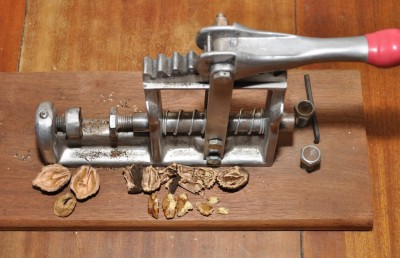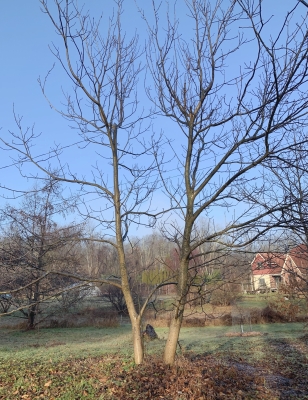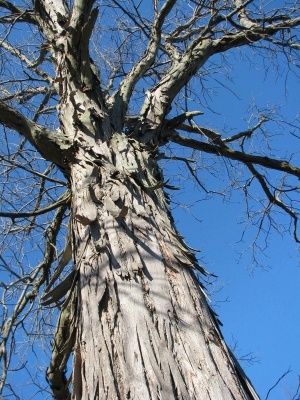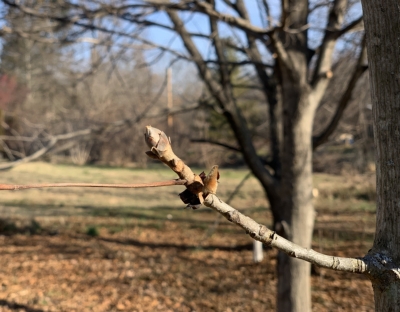THERE ARE LOTS OF NUTS OUT THERE
I’ve written recently about how bountiful this past season has been with fruits. Well, botanically, at least, “fruits” includes “nuts.” More on this later.* The nut harvest was also abundant.
Except for last year, just about every year has been a good year for black walnuts. But this year, it didn’t take long to pick up and fill baskets quickly. After being husked, cleaned, and then left to cure in a squirrel-proof loft, I’ve started cracking them (with my ‘Master Nutcracker’). Large, plum, tasty nutmeats drop free from the shells.
A Surprise Nut
What surprised me most was the harvest of English walnuts, botanically Juglans regia and also known as Persian walnuts. (The moniker “English” may be because of the significant role played by English sailors in distributing the nuts around the world.) Persia, or Eastern Europe is where this plant originated. Early on, humans introduced it to other parts of the world, including England, where Romans brought them 2,000 years ago. In the seventeenth century, the nuts and the wood of these trees was held in such high esteem in parts of Europe that a certificate of having planted a certain number of trees was needed before a man was allowed to marry.
Walnuts arrived in my garden in 2006, from seed from cold-hardy trees handed out at the Saratoga, New York meeting of the New York Nut Growers Association. I planted six of the walnut seeds. Because I have limited space and did not have high hopes for success, I arranged them in two stations of three plants each, with about 30 feet between the stations. In contrast to plants propagated asexually, such as by grafting or cuttings, plants grown from seed have some genetic diversity, in the same way you and your siblings are diverse from each other. I figured that eventually I would remove all but the one best tree at each station.
Despite the threat of frost killing blossoms in spring, walnut blight, defoliation by anthracnose disease in summer, and squirrels robbing all the nuts in fall, I was able to harvest plenty. Earlier in the season, I did notice that not all trees were bearing, or bearing well, so I cut down two of the slackers, one from each station.

English walnut trees, 15 years ol
As far as differences in the nuts from tree to tree, it’s hard to say for sure at this point except to say the nuts on one of the trees may have been smaller. I’ll take a more quantitative look next year.
Walnut trees are known to be slow to come into bearing. There’s a Flanders folk saying that goes, “By the time the tree is big, the planter surely will be dead.” Well, I planted the trees from seed, they have borne and grown fairly big, and I’m not dead.
Still Waiting
Two nut trees whose first fruits I’m eagerly awaiting are both shellbark hickories (Carya laciniosa). Shagbark hickory (C. ovata) is very common around here and throughout eastern U.S., and is notable for its — duh! — very shaggy bark and tasty but small and hard to crack nuts.  Shellbark hickory’s native range doesn’t extend as far east and south as shagbark’s. It’s found mostly along the Ohio and Mississippi Rivers, and bordering regions; nowhere, though, is it common. Also, the bark is less shaggy. The clincher is that shellbark nuts are much larger, around two inches long, and with thinner shells, so you get more bang for your buck with each nut you crack.
Shellbark hickory’s native range doesn’t extend as far east and south as shagbark’s. It’s found mostly along the Ohio and Mississippi Rivers, and bordering regions; nowhere, though, is it common. Also, the bark is less shaggy. The clincher is that shellbark nuts are much larger, around two inches long, and with thinner shells, so you get more bang for your buck with each nut you crack.
I planted the varieties Simpson and Grainger, both of which were selected for easy shelling. (Nut alert! I have since learned that Grainger is, in fact, a shagbark hickory, albeit a variety selected for large shells that crack out well.)
But how about some nuts! Simpson was planted in 2014 and Grainger in 2015, and both grow very slowly, about twelve inches per year. Bearing age is reputedly only a few years with a grafted trees, which, being named varieties, both were.
Nuts or no nuts, the trees are beautiful, their leaves turning a rich, golden yellow in autumn and, in winter, the stout branches punctuated and capped by fat buds.
Botanical Nuts, and Not
*Back to fruits: A fruit, botanically, is any seed-bearing structure of a flowering plant formed from a ripened ovary along with seeds and other structures. A nut is a kind of fruit, in this case with a kernel surrounded by a hard nutshell. A nut’s shell does not open to release the kernel. So all nuts are fruits but all fruits aren’t nuts. Botanically speaking.
Some fruits commonly called nuts, such as almond, pistachio, Brazil nut, walnut, pecan, and macadamia, are not true nuts; they are dry drupes (which doesn’t sound very complimentary, does it?). A nut is a dry drupe whose kernel is enclosed within a stony pit surrounded by flesh and a skin. Think of a peach. That’s a (non)dry drupe.
Chestnut, hazelnut, oak, and birch are examples of true nuts.
That’s all botany. Out on the street, we call lots of things nuts. Peanuts, for example, which are actually legumes, just like peas and beans.


I had not known that for 30 years you’d written AP column — yet just saw in the news that yesterday you gave it up! So perhaps now is an apt time to ask how you got into farmdening altogether. When I was at Cornell, I met many a city or suburban kid who fell in love with the land, and that was it. What is your own early story?
I was a suburban kit who had a plant here and there and was planning to be a chemist. After 3 semesters of grad school in theoretical chemistry, I decided I had enough (although I still love chemistry). Dropped out. Moved to Vermont. Started reading about gardening, but had no garden. The decided to pursue agriculture more seriously and enrolled in grad program in soil science at the Univ. of Wisconsin. Also started gardening and reading about gardening like a maniac. Then got another grad degree in horticulture. Then a job with the USDA Soil Conservation Service. Tired of that so went on for a doctorate in horticulture and worked for USDA Agricultural Research Service. Got a job with Cornell in Fruit research. Job ended and I started writing about gardening, consulting, and lecturing. All this time still gardening and reading about gardening like a maniac. I was lucky and worked hard. That’s the bare bones, probably more than you bargained for.
I planted 2 heartnut trees in my yard. They’re a type of walnut. But I haven’t been able to find out if the roots will affect nearby plants in the way that black walnuts do.
All Juglans and Carya species produce juglone, but black walnut and butternut exude the most.
Wait, you’re telling me that there is a way to crack black walnuts?!
Lots of ways: two rocks; hammer and anvil. But the quickest and lest painful (actually, not painful at all) is with the Master Nutcracker. Expensive, but worth it if you love walnuts.
Love this post. Very informative and easy to understand.
Thanks Nancy.
I bought two stick seedlings of “Carpathian” walnuts from a mail order catalog back when I was a junior in college and dreaming for bushels and bushels of walnuts in my mother’s backyard (the only land I had access for planting, as a 20 year old), as I love walnuts. Fast forward (well not so fast) 34 years later–one walnut tree succumbed but the other is still going strong. The squirrels rob us all harvest though. Never did realize my dream of bushels and bushels of walnuts, but loved reading about your nut adventures. Thank you!
Theere are ways to keep squirrels at bay. Such as trapping. Or pruning so no branches aare within 6 feet of the ground and putting a metal cylinder around the trunk to preven climbing.